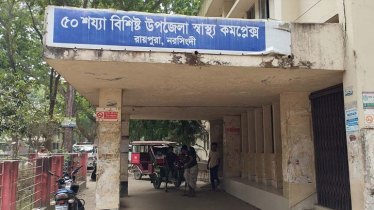
Photo: Messenger
The Brahmaputra River flows from the Himalayas, transitioning to the Jamuna near Saghata in Gaibandha.
During dry seasons, sandbanks form due to reduced water flow, concealing valuable resources. Research by the Institute of Mining, Mineralogy, and Metallurgy identified ilmenite, rutile, zircon, magnetite, garnet, and quartz in the river sands near Gaibandha and Kurigram.
During the monsoon season, waterflow in the river remains high. However, towards the end of the monsoon, water flow decreases, leading to the gradual formation of sand dunes in the Jamuna-Brahmaputra, with vast marshes forming during the dry season along the riverbanks. The Institute of Mining, Mineralogy, and Metallurgy has reported the discovery of six valuable minerals in the sand of the Brahmaputra River.
The company states that the value of mineral resources found in each square kilometer area is at least Tk 3,630 crore without techno-economic evaluation. Scientists cite the research, stating that there are significant mineral resources in the sand of this river. The valuable minerals discovered include ilmenite, rutile, zircon, magnetite, garnet, and quartz.
Rutile finds application in the production of paints, plastics, welding rods, inks, foods, cosmetics, and medicines. It is exported worldwide by countries including Australia, India, Italy, Sri Lanka, Thailand, South Africa, Sierra Leone, and the United States.
Magnetite is utilized in the production of magnets and steel, cleaning coal extracted from mines, and drilling deep wells in oil and gas exploration. Only two countries, South Africa and Australia, export this mineral worldwide.
Garnet, a heavy and valuable mineral, is used in the manufacture of corrugated paper, cleaning ferrous pipes, and sandblasting. Presently, Australia and India are the only countries exporting this mineral globally.
The Brahmaputra River originates from the Manas Sarovar near the Kailash peak of the Himalayas and flows through Tibet and Assam, India, before entering Bangladesh through Kurigram. It is at Saghata Upazila of Gaibandha where it acquires the name Jamuna.
Dr. Mohammad Nazim Zaman, Director of the Institute of Mining, Mineralogy, and Metallurgy in Joypurhat, stated, "We conducted a geophysical survey from the entrance to Kurigram to Gaibandha downstream and the chars in the Tista river basin. A preliminary study was conducted from 2010 to 2012 to determine which minerals are present in the area. As it was effective, the Prime Minister directed for the piloting of this project. After this, an Appropriate Process Technologies (ATP) project was initiated in 2017. According to that project, a mineral research institute was established in Joypurhat. After research, it was found that precious minerals can be found in the sands of the Brahmaputra River."
He also mentioned that a few years ago, two and a half thousand tons of sand were collected from different sandbanks of Kurigram and Gaibandha. From each ton of sand, 2 kg of ilmenite, 200 g of rutile, 400 g of zircon, 3.8 kg of magnetite, 12 kg of garnet, and 50 kg of quartz minerals were obtained.
Dr. Mohammad Nazim Zaman further stated that, citing the research, the market value of sand used for construction after extraction from every square kilometer area at a depth of 10 meters is Tk 80 to 100 crores. The market value of minerals obtained from the same area is Tk 3 thousand 630 crores. The government will determine through research how, which process, and which organization will extract these minerals.
Messenger/Disha








